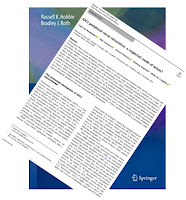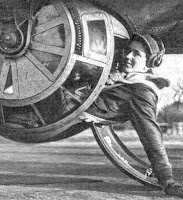This week I spoke at the American Association of Physics Teachers 2021 Summer Meeting. Getting to the meeting was easy; I just logged onto a website. Because of the Covid-19 pandemic, the entire conference was virtual and all the talks were prerecorded. A video of my talk—“Two-Semester Intermediate Course Sequence in Physics for the Life Sciences”—is posted below. If you want a powerpoint of the slides, you can find it here. As readers of this blog might suspect, the courses I describe are based on the textbook Intermediate Physics for Medicine and Biology.
 |
| Redish, E. F. (2021) “Using Math in Physics: Overview,” The Physics Teacher, 59:314–318. |
The key difference between math as math and math in science is that in science we blend our physical knowledge with our knowledge of math. This blending changes the way we put meaning to math and even the way we interpret mathematical equations. Learning to think about physics with math instead of just calculating involves a number of general scientific thinking skills that are often taken for granted [my italics] (and rarely taught) in physics classes. In this paper, I give an overview of my analysis of these additional skills. I propose specific tools for helping students develop these skills in subsequent papers.He makes other good points, such as
• Math in math classes tends to be about numbers. Math in science is not. Math in science blends physics conceptual knowledge with mathematical symbolsand my favorite
• In introductory math, equations are almost always about solving and calculating. In physics [they’re] often about explaining! [his italics, my exclamation point].
 |
| The Art of Insight in Science and Engineering by Sanjoy Mahajan. |
In subsequent articles in The Physics Teacher (some already published, some in the works), Redish discusses skills every student needs to master.
- Dimensional Analysis
- Estimation
- Anchor Equations
- Toy Models
- Functional Dependence
- Reading the Physics in a Graph
- Telling the Story
I like to think that IPMB reinforces these skills. They certainly are ones that I try to emphasize in my “Biological Physics” and “Medical Physics” classes, and that Russ and I attempt to reinforce in our homework problems.
 |
| Screenshot of the Living Physics Portal. |
The Living Physics Portal is an online environment for physics faculty to share and discuss free curricular resources for teaching introductory physics for life sciences (IPLS). The objective of the Portal is to improve the education of the next generation of medical professionals and biologists by making physics classes more relevant for life sciences students. We do this by supporting physics instructors in finding and creating curricular materials and engaging in community discussions with other instructors to improve their courses.Although IPMB is not intended to be used in an introductory course, I believe many materials on the Living Physics Portal would be useful to instructors teaching from IPMB. Conversely, much of the information you find in IPMB, and on this blog, could be helpful to introductory teachers.










